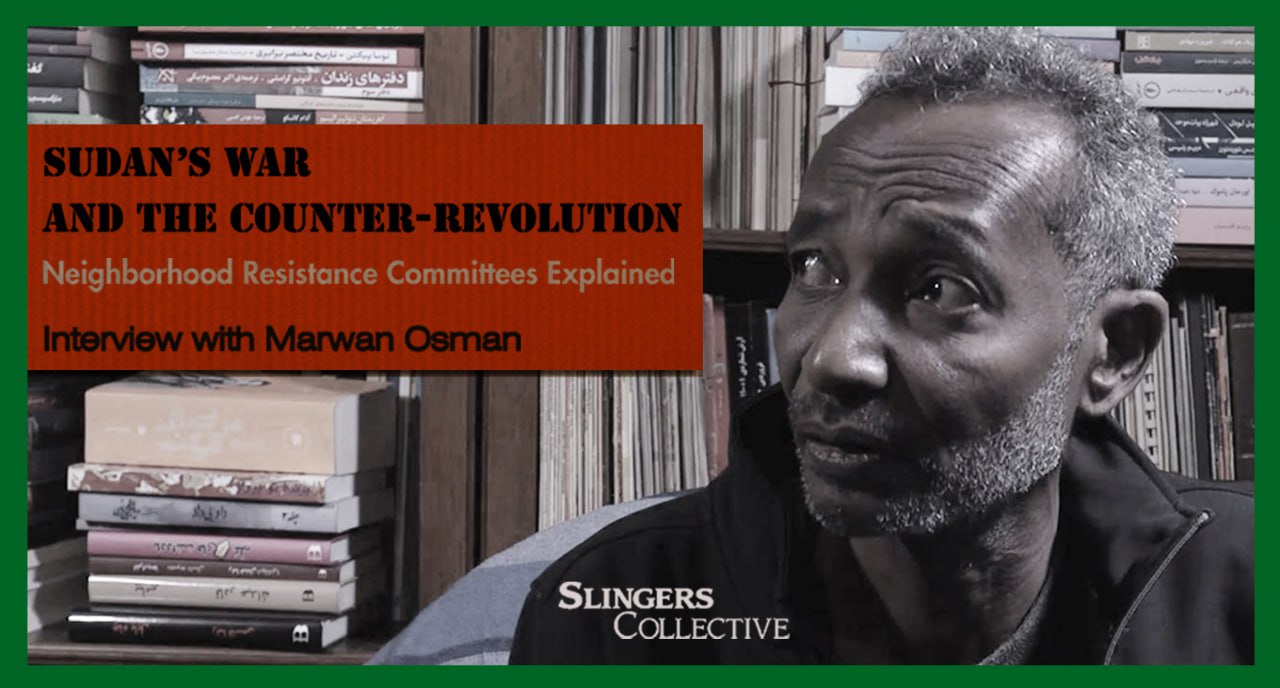In this interview, which was conducted in March 2024, Marwan Osman, a former member of Sudan’s Communist Party and Neighborhood Resistance Committees (NRCs) in Khartoum, argues that Sudan’s current war is not simply SAF versus RSF; rather, it is a counter-revolution aimed at crushing the country’s radical democratic current. Backed by imperial powers and Gulf monarchies, the counter-revolution seeks to sideline the NRCs and re-entrench a militarized, extractive order.
Marwan traces the NRCs from their 2013 origins as grassroots service committees (bread, gas, local oversight) through their 2018 political turn, organizing neighborhood and central demonstrations, popularizing the slogan “no negotiation, no compromise, no partnership with the military,” and drafting the Revolutionary Charter for Establishing People’s Power. With 5,200+ committees across the country, rotational coordination from neighborhood to national levels, and “Emergency Rooms” that kept clinics, agriculture, and community schooling alive after state collapse, the NRCs effectively did the work the government would not.
He also names the movement’s pitfalls: the Resistance Committee’s national vision came late after a long period of debating participation in politics; the horizontal structure of these committees makes decision-making slow; infiltration and repression by both SAF and RSF have been severe; and there’s an unresolved internal debate over remaining strictly peaceful versus organizing armed popular defense against mass atrocities committed against the people of Sudan. The through-line: a struggle between a bottom-up project for democratic self-rule and redistribution, and a counter-revolution bankrolled and armed to preserve the status quo.



Comment here